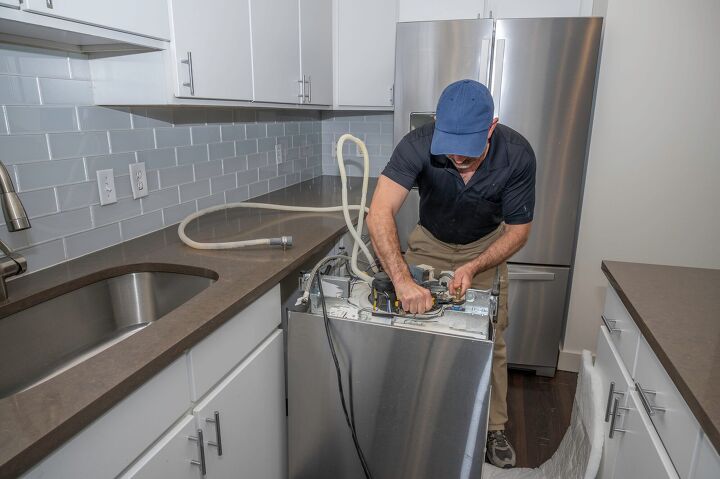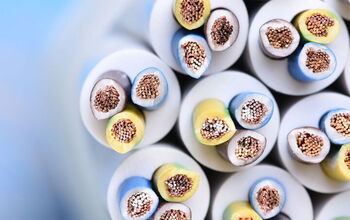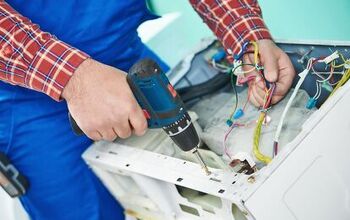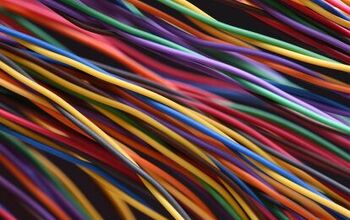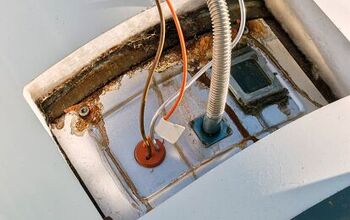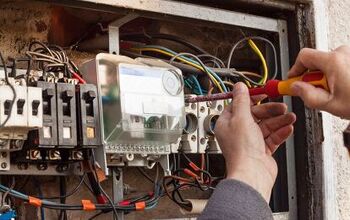What Gauge Wire For A Dishwasher? (Find Out Now!)

When it comes to installing a dishwasher, there are three distinct connections that must be made. The first connection is to the hot water, which is typically done by hooking the appliance up to an outlet on the shut-off valve from the kitchen sink faucet. The second is the drain, which discharges into a specialized fitting on the sink drain’s tailpiece. And, the third connection is the electrical one, in which case you may be wondering: What gauge wire do you need for a dishwasher?
If you’re hardwiring your dishwasher, it will require its own dedicated 20-amp circuit run from the electrical panel with 12/2 NM wire. This simply refers to two (black and white) 12-gauge wires plus a ground wire. Do not use 14/2 wire on a dishwasher or any other 20-amp circuit for that matter, as it is rated for 15 amps.
If you have an outlet directly behind your dishwasher, a plug and a cord can be used. In this situation, make sure that the cord uses a 12-gauge wire and nothing smaller. Continue reading to learn more about how to properly wire a dishwasher, hard wiring vs. plug-in, and what gauge wires to use where.
Do You Need Electricial Wiring or Panel Upgrade Services?
Get free, zero-commitment quotes from pro contractors near you.

Dishwasher Electrical Connection Options
Your dishwasher operates on 120-volt power, and the terminals for the electrical connections can be found behind the appliance, near the floor. In most cases, you’ll see a brass screw, which is designed for the hot wire, and a silver one meant for the neutral wire. In other instances, there may be a black hot wire and a white neutral one. In either case, the ground connection is typically a green grounding screw.
When it comes to hooking up your dishwasher electrically, you have two options: connecting a pigtail or hard-wiring. A pigtail is simple a wire with a plug on the end, while hard-wiring involves permanently connecting the terminals to the circuit wires in your wall.
Installing a Pigtail
When installing a pigtail on your dishwasher, you have to be able to plug it into a three-prong receptacle. Electric code does not state whether the receptacle must be a ground fault circuit interrupting outlet or not, but it doesn’t hurt to have an extra outlet of this type in your kitchen.
Ideally, you want the receptacle to be in an adjacent cabinet, instead of behind the dishwasher itself. That way, you can access the plug without having to pull out your dishwasher and move it aside. In this case, you’ll have to drill about a one-inch hole through the cabinet to pass the plug through – a task that can be problematic if you have metal cabinet walls.
Follow these steps to hook up a standard pigtail plug to your dishwasher:
- Find the terminal block cover at the back of your dishwasher. This is easily distinguished by the “electrical shock” warning sticker, either next to the cover or on it. Use a screwdriver to remove the screws that hold the cover in place and put the cover off to the side.
- Slide the end of the pigtail cord, with the bare wires coming out of it, into the terminal block. To hold the cord in place, tighten the retaining screws on the clamp using a screwdriver.
- Loosen the green ground screw. If it’s not green, you’ll be able to identify it by the fact that it’s not connected to a terminal.
- Wrap the bare end of the green or bare wire around the ground screw and tighten to secure.
- Connect the black wires together using a wire nut, taping the wire nut to the wires using electrical tape.
- Connect the white wires together in the same manner, using a wire nut and then taping with electrical tape.
- Place the cover back on the block and screw the screws back in to secure.
- Now, all that’s left is to plug the other end of the cord into the outlet in the adjacent cabinet.
What Gauge Wire?
In order to effectively install a pigtail for your dishwasher, it’s important that you choose the right gauge wire. The gauge designates the amps and voltage that the wire is capable of conveying to the appliance from the circuit. Ideally, you want to use a 12-gauge wire for your dishwasher, which can convey up to 41 amps.
Hard-Wiring a Dishwasher
The other option to install your dishwasher’s electrical connection is to hard-wire it. When you hard-wire a dishwasher, the circuit wires are available in the alcove that the dishwasher installs into. The only difference between hardwiring and using a dishwasher cord is that the former connects directly to the breaker box.
Once connected, you cannot pull out the dishwasher any farther than the wires permit. In this case, a 12/2 NM wire should be run from the breaker box to where the dishwasher will be installed. Supply electricity for a dishwasher requires a 20-amp breaker in the breaker box, and a 12/2 rated wire. Never use a 14/2 wire for a dishwasher or other 20-amp circuit.
What’s the Best Connection Method?
If you’re replacing a pre-existing dishwasher, it’s easy to choose an electrical connection method, as the wire or receptacle will already be in place. However, if trying to determine the best connection method for a new installation, keep in mind that plugs are easy to locate and disconnect if your dishwasher malfunctions.
However, it’s not uncommon for power cords to need replacing as they are not as protected as the wires that go through a conduit. In fact, a power cord that is too close to the base of the dishwasher tub or motor will melt over time, which will cause the dishwasher to stop functioning.
On the other hand, when you have a hard-wired dishwasher, you’ll have to shut off the appliance at the breaker. Though, this option evades the need for an extra receptacle under the sink or in an adjacent cabinet.
Do You Need Electricial Wiring or Panel Upgrade Services?
Get free, zero-commitment quotes from pro contractors near you.

Wrapping It Up
Whether you choose to hard-wire your dishwasher or install a pigtail for the electrical connection, a 12-gauge wire is typically required.

Jessica considers herself a home improvement and design enthusiast. She grew up surrounded by constant home improvement projects and owes most of what she knows to helping her dad renovate her childhood home. Being a Los Angeles resident, Jessica spends a lot of her time looking for her next DIY project and sharing her love for home design.
More by Jessica Stone



